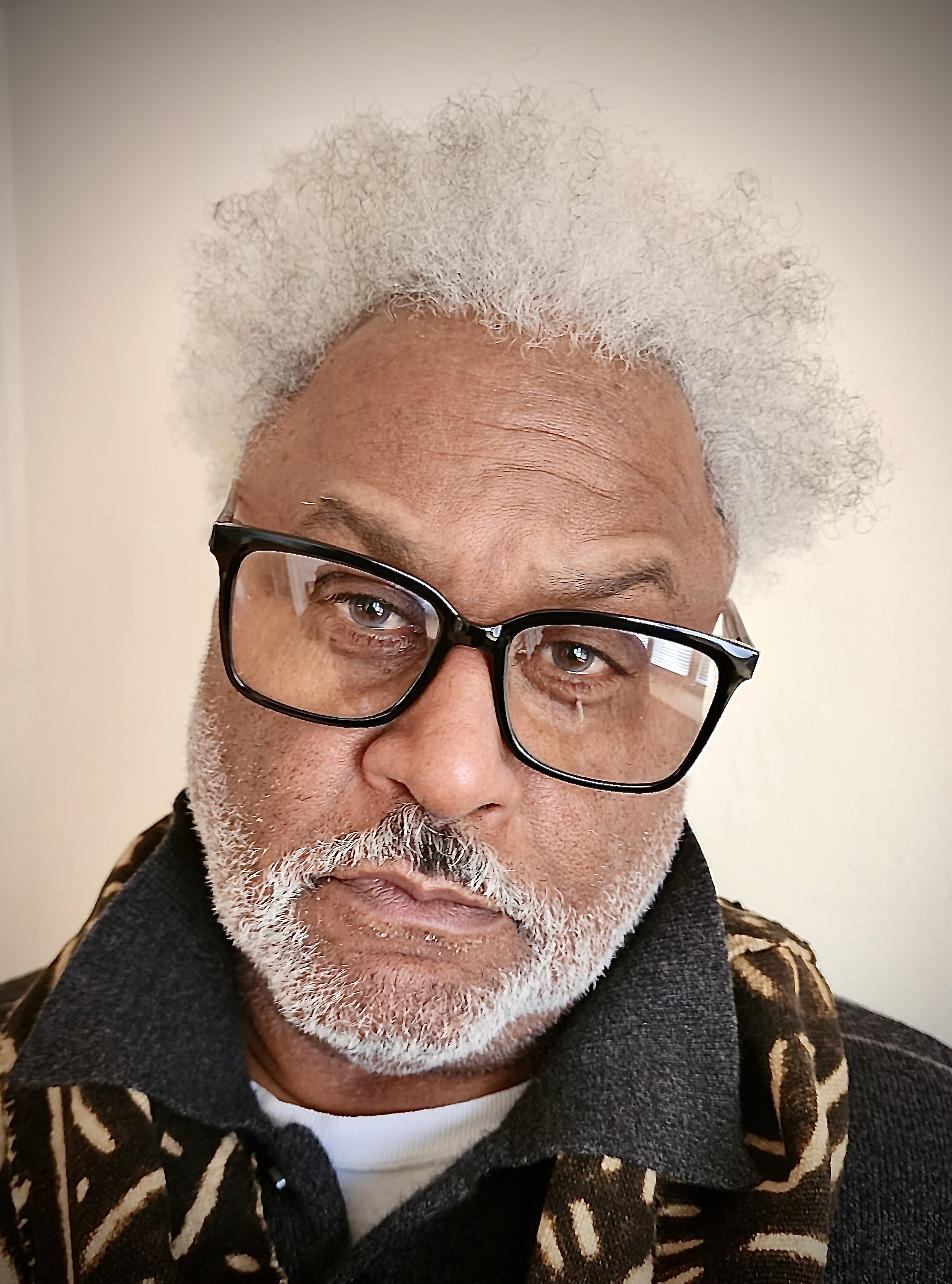The Gallery of Revolution presents
I.C. BLACK APPLE PIE
The Artistry of WAYNE CURTIS
I.C. Black Apple Pie is a visual representation of the unitarian movement between globally dispersed oppressed communities. This new global revolutionary inter-communal (IC) movement seeks to unify its forces and secure its cultural sustainability by withdrawing from the brutality of local and global capitalism.
“Hajj Malik El Shabazz”
Wayne Curtis
Brief Biography
Wayne Curtis was born April 10, 1948 in Detroit, Michigan to Warren Gamble Curtis and Mandisa (Rollind) Curtis. Next to the oldest, Curtis had four sisters. He began drawing as a child. His mother encouraged him to draw and told him that he never put the pencil down. Wayne remembers drawing on walls, the front doors, and inside encyclopedias. My mother said, ‘If you color inside the lines, the pictures will become alive.” Her statements encouraged him to keep drawing.
Wayne states, “It is also essential to understand the political climate at that time. Because of the GI bill, we could move to the west side of Detroit. My parents broke up because of their youth and disillusion with capitalism. I moved to the eastside to live with my grandmother. Because I did not do well in school, I kept drawing as a means of escape. I don’t consider myself an artist. I draw as a means of political expression. Political expression comes from the development of my consciousness, which was impacted by my kidnapping during the Vietnam War in 1969. The Vietnamese people educated me that our struggles, our mutual resistance to capitalism and imperialism, were the same. I was kidnapped, not drafted, by the US military. I used the term kidnapped deliberately because they [the US government] lied to me about the purpose of the war. They kidnapped me to function as the police to protect their expropriation of rubber plantations, oil, and other corporate interests, just as the misguided police function today in our neighborhoods. I was protecting a French rubber plantation. The Vietnamese people educated me about this.”
Wayne joined the National Committee to Combat Fascism in 1970, which, one year later in 1971, became the Detroit branch of the Black Panther Party (BPP). Inspired by BPP revolutionary artist Emory Douglass, Wayne remembers, “I created two posters. But my main work was political organizing in Detroit by selling BPP papers and organizing the survival program. I continued to do art on my own. I created the art of George Jackson. I did not get formal art training until after I left the BPP. The BPP in Detroit went to Oakland, CA, to create a base of operations. I remained here in Detroit and began formal art training at the Center of Creative Studies CCS in Illustration and art direction and continued further study at Marygrove College before dropping out in about 2000.”


